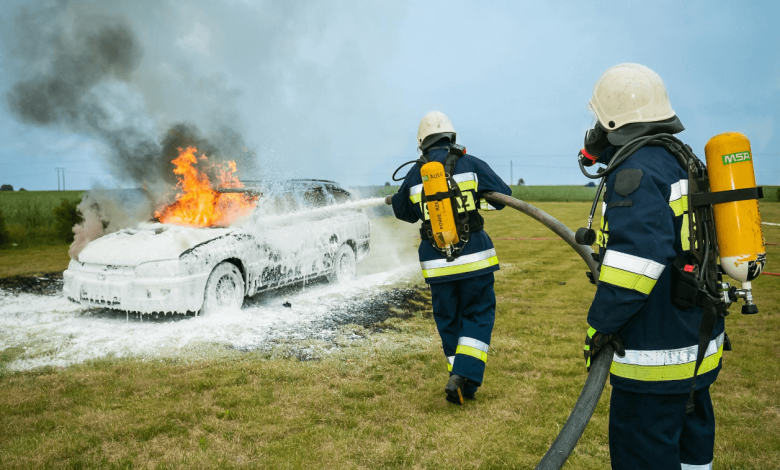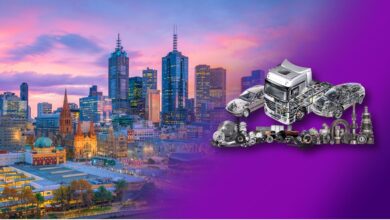Rapid Response: How Firefighting Foam Tackles Infernos

In the battle against infernos, firefighters deploy various tools and techniques to combat the raging flames. Among these tools, firefighting foam is a versatile and effective solution for tackling fires of different types and intensities.
From industrial blazes to wildfires, firefighting foam is crucial in swiftly containing and extinguishing fires while minimizing damage and risk. This article delves into the science behind firefighting foam, its applications, and its effectiveness in emergency response scenarios.
Understanding Firefighting Foam
Infernos are common in the USA. According to the National Fire Protection Association (NFPA), around 1.5 million fires were reported nationwide. These fires led to 3,790 civilian deaths, 13,250 civilian injuries, and $18 billion in property damage.
Many of these infernos are oil-based or electrical fires that cannot be effectively suppressed by regular fire extinguishers or water. This is where firefighting foams come into the picture.
Firefighting foam is a specialized substance used to suppress fires, particularly those involving flammable liquids or materials. It is crucial in firefighting operations because it can rapidly smother fires and prevent re-ignition.
Several types of firefighting foam are designed for specific applications and fire hazards. Commonly used foams include:
- Aqueous Film-Forming Foam (AFFF)
- Protein foam
- Fluoroprotein foam
Each type has unique properties that make it suitable for fire scenarios, such as hydrocarbon or polar solvent fires.
As an article from Clean Water Action mentions, AFFF is the most commonly used and extremely effective in suppressing fires. It is effective because it contains ingredients like per- and poly-fluoroalkyl substances (PFAS). Thousands of PFAS chemicals are used across different products.
According to TorHoerman Law, the problem with PFAS is that they are forever chemicals. Thus, they do not break down easily and can accumulate in the environment. Therefore, they are also found in tap water across most parts of the USA.
Besides being present in the environment, their direct exposure can be extremely harmful. In fact, many studies have linked them to various types of cancers. This has also been seen in military personnel and firefighters who are constantly exposed to AFFF.
Many firefighters have experienced injuries like kidney, testicular, pancreatic, and bladder cancers, among others. They have also filed AFFF foam lawsuits against manufacturers. Through an AFFF foam lawsuit, the plaintiffs allege that the manufacturers didn’t warn them of the potential health problems caused by using their products.
All these cases have been consolidated into multidistrict litigation (MDL) for smooth proceedings. In February 2024, around 176 new filings were added to the MDL, bringing the total number of pending lawsuits within the MDL to over 7,000.
How Does Firefighting Foam Work?
Reliable Fire & Security states that firefighting foams separate the ignition source from the surface. They create a blanket-like barrier over the fuel surface. This prevents oxygen from reaching the fire and suppresses the release of flammable vapors. This effectively starves the fire of the elements it needs to sustain itself, leading to its suppression.
Foam is typically generated by mixing water with foam concentrate in a specialized firefighting foam system. The foam concentrate contains surfactants and other additives that enable it to spread rapidly across the fuel surface. The mixture is then aerated to produce bubbles, which help the foam expand and cover a larger area more effectively.
Different types of firefighting foam are designed for specific applications and fire risks. Class A foam is primarily used for combating fires involving ordinary combustibles such as wood, paper, and cloth. It helps to cool the fire and penetrate deep into porous materials to extinguish smoldering embers.
Class A foam is the most widely used type. Global Market Insights states that it held a dominant market share in 2022. The market share of Class A foam is expected to grow at a CAGR of 4.7% until 2032.
Class B foam is formulated to tackle fires fueled by flammable liquids and gasses. It forms a vapor-suppressing blanket that prevents the spread of vapors and reignition. Class C foam is specifically designed for fires involving energized electrical equipment. It is formulated to combat fires where the presence of electricity poses an additional hazard.
Applications of Firefighting Foam
Firefighting foam, a critical tool in the arsenal of firefighters, finds numerous applications in combating various types of fires. The foam primarily suppresses fires by smothering and cooling the flames and preventing reignition. Here are some common applications of firefighting foam:
Structural Fires
In structural firefighting, foam is commonly used to extinguish fires in buildings, warehouses, and other enclosed spaces. Firefighters may use foam to coat surfaces and materials, preventing the fire from spreading and facilitating faster extinguishment.
Industrial Fires
Industries such as petrochemical plants, refineries, and storage facilities often handle flammable materials that pose significant fire risks. Firefighting foam is instrumental in combating large-scale industrial fires by forming a protective layer over volatile liquids.
Wildfires
Wildfires can cause extensive damage. According to the National Centers for Environmental Information (NCEI), there were 66,255 wildfires in the US in 2022, burning 7,534,403 acres of land. The biggest problem with wildfires is that they are difficult to suppress.
When traditional firefighting methods are insufficient to contain wildfires, aerial firefighting foam can create firebreaks and control the spread of flames. Firefighting aircraft equipped with foam-dispensing systems can rapidly cover vast areas, smothering the fire. This can prevent it from engulfing forests and residential areas.
Vehicle Fires
Firefighting foam also extinguishes fires involving vehicles, including automobiles, aircraft, and ships. Its ability to quickly suppress flames and cool hot surfaces makes it invaluable for firefighters. Foams can help them rescue passengers and prevent further damage to vehicles and surrounding structures.
Read also: Choosing the Right Cylinder Case: A Buyer’s Guide for Laboratories
Frequently Asked Questions
Is Firefighting Foam Safe for Use in Residential Areas?
Yes, firefighting foam is safe for use in residential areas when applied properly by trained firefighters. However, some foam formulations may contain chemicals that pose health risks if not handled and disposed of correctly.
Can Firefighting Foam Be Used on Electrical Fires?
Firefighting foam is not recommended for electrical fires, as it is conductive and could cause electric shock. Specialized extinguishing agents designed for electrical fires should be used in such cases.
How Long Does Firefighting Foam Remain Effective After Application?
The effectiveness of firefighting foam depends on various factors, including the type of foam used, environmental conditions, fire intensity, etc. Generally, firefighting foam can remain effective for several hours, but reapplication may be necessary for prolonged operations.
To conclude, firefighting foam is vital for firefighters worldwide in the relentless battle against fires. Its ability to rapidly suppress flames, protect lives and property, and mitigate environmental damage makes it an indispensable asset in emergency response operations.
As technologies evolve, firefighting foam will remain at the forefront of firefighting strategies, ensuring swift and effective responses to challenging infernos. However, its ingredients, especially PFAS chemicals, should be replaced with safer alternatives.


